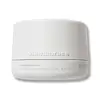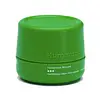What's inside
What's inside
 Key Ingredients
Key Ingredients

 Benefits
Benefits

 Concerns
Concerns

 Ingredients Side-by-side
Ingredients Side-by-side

Water
Skin ConditioningC13-15 Alkane
SolventDi-C12-15 Alkyl Fumarate
EmollientButyrospermum Parkii Butter
Skin ConditioningPropanediol
SolventCetearyl Olivate
Myristyl Myristate
EmollientSorbitan Olivate
EmulsifyingPhytosteryl Macadamiate
Skin ConditioningCetearyl Alcohol
EmollientCapryloyl Glycerin/Sebacic Acid Copolymer
Skin ConditioningBakuchiol
AntimicrobialTremella Fuciformis Sporocarp Extract
AntioxidantBetaine
HumectantCaprylyl Glycol
EmollientDiheptyl Succinate
EmollientEthylhexylglycerin
Skin ConditioningHexapeptide-48 Hcl
Skin ConditioningGlycerin
HumectantPseudozyma Epicola/Apricot Kernel Oil/Olive Fruit Oil/Sunflower Seed Oil/Sweet Almond Oil/(Angelica Gigas/Lithospermum Erythrorhizon) Root Extract Ferment Extract Filtrate
Sodium Hyaluronate
HumectantGlyceryl Caprylate
EmollientGlyceryl Undecylenate
EmollientHectorite
AbsorbentPanthenol
Skin ConditioningPentylene Glycol
Skin ConditioningPotassium Hydroxide
BufferingCitric Acid
BufferingTocopherol
AntioxidantTrisodium Ethylenediamine Disuccinate
Chlorphenesin
AntimicrobialWater, C13-15 Alkane, Di-C12-15 Alkyl Fumarate, Butyrospermum Parkii Butter, Propanediol, Cetearyl Olivate, Myristyl Myristate, Sorbitan Olivate, Phytosteryl Macadamiate, Cetearyl Alcohol, Capryloyl Glycerin/Sebacic Acid Copolymer, Bakuchiol, Tremella Fuciformis Sporocarp Extract, Betaine, Caprylyl Glycol, Diheptyl Succinate, Ethylhexylglycerin, Hexapeptide-48 Hcl, Glycerin, Pseudozyma Epicola/Apricot Kernel Oil/Olive Fruit Oil/Sunflower Seed Oil/Sweet Almond Oil/(Angelica Gigas/Lithospermum Erythrorhizon) Root Extract Ferment Extract Filtrate, Sodium Hyaluronate, Glyceryl Caprylate, Glyceryl Undecylenate, Hectorite, Panthenol, Pentylene Glycol, Potassium Hydroxide, Citric Acid, Tocopherol, Trisodium Ethylenediamine Disuccinate, Chlorphenesin
Water
Skin ConditioningGlycerin
HumectantCaprylic/Capric Triglyceride
MaskingGlyceryl Stearate Se
EmulsifyingIsononyl Isononanoate
EmollientCetearyl Alcohol
EmollientPentylene Glycol
Skin ConditioningPalmitic Acid
EmollientOryza Sativa Bran Water
MaskingTremella Fuciformis Sporocarp Extract
AntioxidantSqualane
EmollientSodium Hyaluronate
HumectantNiacinamide
SmoothingPyrus Malus Fruit Extract
Skin ConditioningCentella Asiatica Leaf Extract
Skin ConditioningLactobacillus Ferment
Skin ConditioningCocos Nucifera Fruit Juice
EmollientCocos Nucifera Water
MaskingBetaine
HumectantStearic Acid
CleansingTocopheryl Acetate
AntioxidantMaltodextrin
AbsorbentCarbomer
Emulsion StabilisingTrisodium Ethylenediamine Disuccinate
Potassium Sorbate
PreservativeSodium Benzoate
MaskingSodium Anisate
AntimicrobialSodium Levulinate
Skin ConditioningMyristic Acid
CleansingPhenoxyethanol
PreservativeEthylhexylglycerin
Skin ConditioningPotassium Hydroxide
BufferingXanthan Gum
EmulsifyingWater, Glycerin, Caprylic/Capric Triglyceride, Glyceryl Stearate Se, Isononyl Isononanoate, Cetearyl Alcohol, Pentylene Glycol, Palmitic Acid, Oryza Sativa Bran Water, Tremella Fuciformis Sporocarp Extract, Squalane, Sodium Hyaluronate, Niacinamide, Pyrus Malus Fruit Extract, Centella Asiatica Leaf Extract, Lactobacillus Ferment, Cocos Nucifera Fruit Juice, Cocos Nucifera Water, Betaine, Stearic Acid, Tocopheryl Acetate, Maltodextrin, Carbomer, Trisodium Ethylenediamine Disuccinate, Potassium Sorbate, Sodium Benzoate, Sodium Anisate, Sodium Levulinate, Myristic Acid, Phenoxyethanol, Ethylhexylglycerin, Potassium Hydroxide, Xanthan Gum
Ingredients Explained
These ingredients are found in both products.
Ingredients higher up in an ingredient list are typically present in a larger amount.
Betaine is a common humectant (a substance that promotes retention of moisture). It's known to be gentle on the skin and can help balance hydration.
This ingredient is best for improving hydration and soothing irritated skin. Studies also show it helps even out skin tone.
Fun fact: Betaine is naturally created in the skin and body. The kind found within cosmetic products can be either plant-derived or synthetic.
Another name for betaine is trimethylglycine.
Learn more about BetaineCetearyl alcohol is a mixture of two fatty alcohols: cetyl alcohol and stearyl alcohol. It is mainly used as an emulsifier. Emulsifiers help prevent the separation of oils and products. Due to its composition, it can also be used to thicken a product or help create foam.
Cetearyl alcohol is an emollient. Emollients help soothe and hydrate the skin by trapping moisture.
Studies show Cetearyl alcohol is non-toxic and non-irritating. The FDA allows products labeled "alcohol-free" to have fatty alcohols.
This ingredient is usually derived from plant oils such as palm, vegetable, or coconut oils. There is debate on whether this ingredient will cause acne.
Due to the fatty acid base, this ingredient may not be Malassezia folliculitis safe.
Learn more about Cetearyl AlcoholEthylhexylglycerin (we can't pronounce this either) is commonly used as a preservative and skin softener. It is derived from glyceryl.
You might see Ethylhexylglycerin often paired with other preservatives such as phenoxyethanol. Ethylhexylglycerin has been found to increase the effectiveness of these other preservatives.
Glycerin is already naturally found in your skin. It helps moisturize and protect your skin.
A study from 2016 found glycerin to be more effective as a humectant than AHAs and hyaluronic acid.
As a humectant, it helps the skin stay hydrated by pulling moisture to your skin. The low molecular weight of glycerin allows it to pull moisture into the deeper layers of your skin.
Hydrated skin improves your skin barrier; Your skin barrier helps protect against irritants and bacteria.
Glycerin has also been found to have antimicrobial and antiviral properties. Due to these properties, glycerin is often used in wound and burn treatments.
In cosmetics, glycerin is usually derived from plants such as soybean or palm. However, it can also be sourced from animals, such as tallow or animal fat.
This ingredient is organic, colorless, odorless, and non-toxic.
Glycerin is the name for this ingredient in American English. British English uses Glycerol/Glycerine.
Learn more about GlycerinPentylene glycol is typically used within a product to thicken it. It also adds a smooth, soft, and moisturizing feel to the product. It is naturally found in plants such as sugar beets.
The hydrophilic trait of Pentylene Glycol makes it a humectant. As a humectant, Pentylene Glycol helps draw moisture from the air to your skin. This can help keep your skin hydrated.
This property also makes Pentylene Glycol a great texture enhancer. It can also help thicken or stabilize a product.
Pentylene Glycol also acts as a mild preservative and helps to keep a product microbe-free.
Some people may experience mild eye and skin irritation from Pentylene Glycol. We always recommend speaking with a professional about using this ingredient in your routine.
Pentylene Glycol has a low molecular weight and is part of the 1,2-glycol family.
Learn more about Pentylene GlycolPotassium hydroxide is commonly known as caustic potash. It is used to fix the pH of a product or as a cleaning agent in soap. In cleansers, it is used for the saponification of oils.
Sapnification is the process of creating fatty acid metal salts from triglycerides and a strong base. During this process, Potassium Hydroxide is used up and is not present in the final product.
Using high concentrations of Potassium Hydroxide have shown to irritate the skin.
Learn more about Potassium HydroxideSodium Hyaluronate is hyaluronic acid's salt form. It is commonly derived from the sodium salt of hyaluronic acid.
Like hyaluronic acid, it is great at holding water and acts as a humectant. This makes it a great skin hydrating ingredient.
Sodium Hyaluronate is naturally occurring in our bodies and is mostly found in eye fluid and joints.
These are some other common types of Hyaluronic Acid:
Learn more about Sodium HyaluronateTremella Fuciformis is also known as snow mushroom. This ingredient comes from the sporocarp, which is also the fruit body of the fungi.
Snow mushroom has hydrating and antioxidant properties.
According to a manufacturer, the glucuronic acid of this ingredient promotes the presence of hyaluronic acid in the middle layer of skin to keep that layer sufficiently hydrated.
Learn more about Tremella Fuciformis Sporocarp ExtractTrisodium Ethylenediamine Disuccinate is used to help stabilize a product.
It is a chelating agent, meaning it helps prevent metal ions from binding to other ingredients. This prevents unwanted reactions in products. Metal ions can come into a product via the water ingredient. They are found in trace amounts and are not known to be harmful.
Water. It's the most common cosmetic ingredient of all. You'll usually see it at the top of ingredient lists, meaning that it makes up the largest part of the product.
So why is it so popular? Water most often acts as a solvent - this means that it helps dissolve other ingredients into the formulation.
You'll also recognize water as that liquid we all need to stay alive. If you see this, drink a glass of water. Stay hydrated!
Learn more about Water